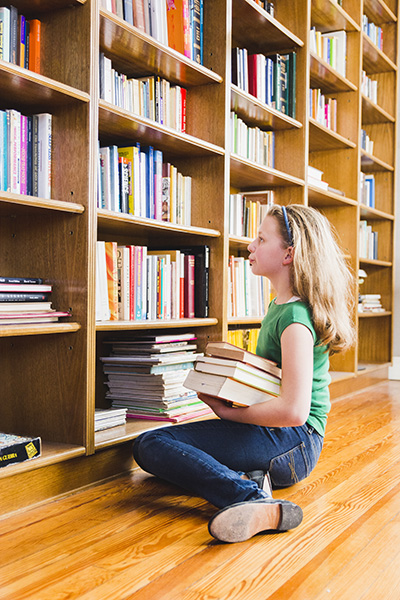In Australia we publish more children’s books per head of population than any other country. We have an amazing choice of reading material as we fulfill the obligation to read widely to our students. Yet we tend to default to the same books by the same authors. Are these the only ones that will ‘work’ with our kids? How can we broaden our own knowledge?
Our teaching obligations are clear:
Students in K–6 must read, listen to and view a variety of texts that are appropriate to their needs, interests and abilities.
These texts must give students experience of [among other things]
- texts which are widely regarded as quality literature
- a widely defined Australian literature, including texts that give insights into Aboriginal experiences in Australia
- a wide range of literary texts from other countries and times, including poetry, drama scripts, prose fiction and picture books
- texts written about intercultural experiences
- texts that provide insights about the peoples and cultures of Asia
The only way to really find out for ourselves what is available, is to read. Lots.
We have to know which books are enjoyable, which ones contain at least some elements from the list above, which ones have won awards in other countries, and ones that don’t necessarily appeal. We expect, and provide for, our students to read widely. We need to as well.
Here are some places to look.
Book lists
Suggested Texts for the NSW English K-10 Syllabus. Included are some ‘classic’ texts and authors, and the following: fiction, picture books and graphic novels, in suggested Stages. There is a list of texts with summaries, and an appendix of winners of major book awards for children and young adults. Other genres are also included. The lists are not definitive, but they are designed to help teachers. The collection stops at 2012 and is currently being revised.
Make a selection from your library, and select the ones most suited, knowing they should address the requirements.
Supplement this list with your own selections. Try these sites:
CBCA (Children’s Book Council Australia) has awarded annual prizes Australian children’s books since 1946, so has form. Many school librarians purchase the entire short list each year.
PETAA (Primary English Teaching Association Australia) publishes teaching units based on the CBCA annual book awards. These are an excellent way to get to know the new books.
Reading Australia provides teaching resources for Australian literature, mapped to the Australian Curriculum.
Readings has a comprehensive list of Indigenous texts. A brief introduction to each book is provided.
How to choose
We have to be pretty sure that any book we read:
- is suitable for the classroom. Our time in the classroom is precious. Models should meet syllabus requirements, and demonstrate features of text we have to teach. Many ‘novels’, including those with drawings taking up most of every page, are designed for the solo reader. Consider carefully the reading aloud of books focused on bums, farts, underwear or snot.
- is easy for you to read aloud. You have to be able to read the text with relative ease and flexibility. Sentence length and construction must work for you. You are modelling real reading that is fluent and expressive.
- allows for every child to feel you are reading to them. During reading, you need to be able to pause, to glance up and sweep the room, to make eye contact with each child at some point, and to add some non-verbal comment if appropriate.
- does not require funny voices. Don’t be tempted. The hint of a growl for a bad-tempered character, a lighter tone for a child, severity and depth for the judge is enough. Let the students do the work of interpreting the author’s words, to create the voice of each character.
- is appropriate for your students’ general stage of social, emotional and physical development. Children’s awareness of issues, concepts and ideas play a role in engagement with characters and events in literature. Recommendations by experts are usually informed by these understandings.
- will engage the students. There is no guarantee this will happen. If it’s not working for you or your class, stop reading. Talk about reasons and move on.
Coming back to the old reliables, consider the following.
Tried and true
Better Reading has just produced a list of the 50 most popular children’s books in Australia, as voted by members of that community. You will know most of them. Many have been popular with Australian children for years. Frances Hodgson Burnett (The Secret Garden) died in 1924, and Blyton’s The Magic Faraway Tree was published in 1943. They are books for readers.
The books for younger children are entertaining and fun, and can be enjoyed a hundred times, as the perfect introduction to the joys of reading.
The books for older children are ones for maturing readers. The stories are engaging, exciting, and safe. Most of them fall into a teacher category of ‘Why read it to the class when kids can read it for themselves?’ We can certainly guide developing readers to these books through recommendation or by reading a chapter. But we can safely leave the books to the reader to explore.
The reason these books appear frequently in classrooms is often because we know the books and that they usually work well, or they are recommended.
Many of the books on this list don’t give children much of a range of literary experience. Critical examination can reveal issues such as stereotyping, which won’t necessarily be obvious to a developing reader. They don’t provide breadth and the cultural richness required for our students.
We can take the risks with deciding which books to read and/or study. We can extend our students’ knowledge of challenging subjects and texts, more balanced and more current subjects, as required by our teaching obligations. That way, we open the literary possibilities for all our students.







